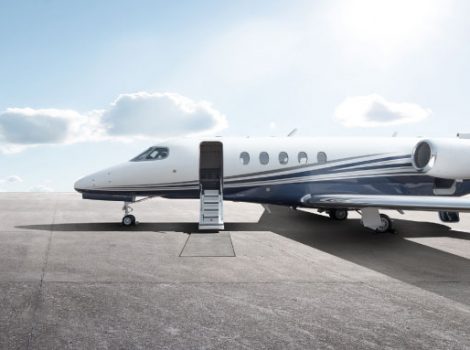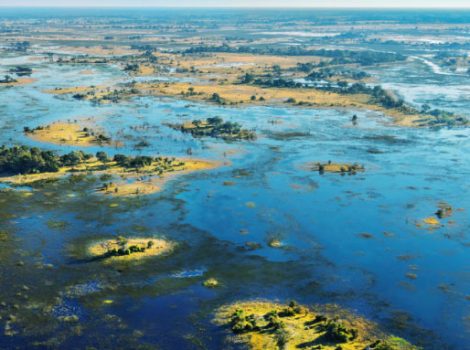
When another Land Cruiser passes ours we rumble to a halt. It’s not uncommon to stop and share animal intel on safari, but I’m more curious about what lodge the car belongs to and how many guests they have in camp, rather than finding what animals they’ve seen.
Considering it’s the first car we’ve seen on our 2.5-hour journey from Linyanti (in the north Chobe National Park) to Savuti (a bit further south), my curiosity is at an all-time high.
Ordinarily, this wouldn’t be the case. Although Botswana is known to limit tourists (thanks to the country’s high-end tourism model that keeps numbers low), it never has a shortage of trucks filled with travellers dressed in beige, pocketed gear with binoculars slung around their necks. On this late March day though, khaki-clad tourists are few and far between, and I can’t help but feel like I quite literally have the whole of the coveted Chobe to myself. It’s less than ideal to see a lack of tourists in a place that needs them most, but there’s no denying that having an entire national park to yourself has its benefits–not bothering about making conversation with other guests on your vehicle or sharing a sighting with the click-click of cameras in your ear.
On this six-day journey through Linyanti and the Khwai Concession (on the edge of the Moremi Game Reserve), mornings are spent winding through the towering trees of Linyanti or the thicketed bush of the Khwai Concession tracking wild dogs and leopards. Evenings are dedicated to sunset drinks on the edge of murky hippo pools, where the archaic animals wallow and grunt as the sun bruises the sky. Followed by a glass of wine back at the lodge around the fire pit, the only sound being the hiss and snap of the flames punctuated by the odd distant roar of a lion. These days and nights are no different to how a safari experience was before the pandemic (bar the lack of guests), but they are reminders that while COVID changed just about everything, it didn’t entirely change the bush.
Botswana, like many other countries that rely on safari tourism, has suffered majorly during the pandemic. Many tourism companies have laid off staff or made pay cuts (though I was travelling with African Bush Camps, and no staff had been laid off). Pressing conservation projects have been paused and, in some countries, there’s been an increase in poaching due to dwindling incomes.
Tourism isn’t just another form of income for the country, it’s a lifeline–thousands of people and preservation projects rely on these dollars, especially in remote areas. And although African Bush Camps has managed to fund its foundation and support anti-poaching units, this isn’t the case with thousands of other organisations and lodges. For many, business is only anticipated to pick up in 2022. Even at Maun airport, the gateway to Botswana’s beloved Okavango Delta, I hear few foreign accents and see no welcome signs in the arrival section. With limited flights in and out (Airlink flies twice a week from Johannesburg), the planes are always busy, but it’s merely a bottleneck effect–in fact, I almost couldn’t get on a flight to Maun and almost missed my flight back to Johannesburg (which would have meant laying over until the next plane came in, two days away).
Despite flight limitations though, travelling to Botswana couldn’t be easier. Antigen tests are swiftly administered on arrival, and PCR testing is widely available, even deep in the wilderness – where nurses are available to fly into some lodges and provide remote tests. For those unable to pay the hefty helicopter fee, testing is easily available in Maun, at a site a few minutes from the airport. Travellers can either layover for the night (results are generally returned in 24 hours) or stop in Maun on their way to another destination (for two nights, which would fit into the 72-hour window that most countries require).
Even in the Okavango Delta – the inland river system that overflows not just with water but wildlife, too – I hear more crickets than safari vehicles, which is nice, but again, less than ideal. Where I’m staying, at Khwai Leadwood, a smart new camp that opened in early April along a bend of the Khwai River, there’s one European couple and a lone American traveller. When I ask the single traveller what prompted her visit to Botswana, she tells me it was a trip she’d put on pause when the pandemic struck. But now with one shot of the vaccine and weeks spent cooped up in her house, she was itching to finally take it. “I couldn’t wait any longer,” she tells me, admitting that arriving in Botswana, from a country crippled by COVID, was in many ways a relief. It was glaringly visible to me how she looked like could finally exhale (not on me and from six feet away, of course).
Back in New York, my trip to Botswana feels like all but a blur. The grunting sounds of hippos have been replaced with wailing sirens and, after not having reception for a week, I now have the constant news cycle pinging my phone. And all I can think is that, yes, Botswana gave me hippos, sunsets and less-crowded national parks, but it also gave me the ability to breathe.
Article by Mary Holland
http://ca.finance.yahoo.com/news/visiting-botswana-now-090212327.html



